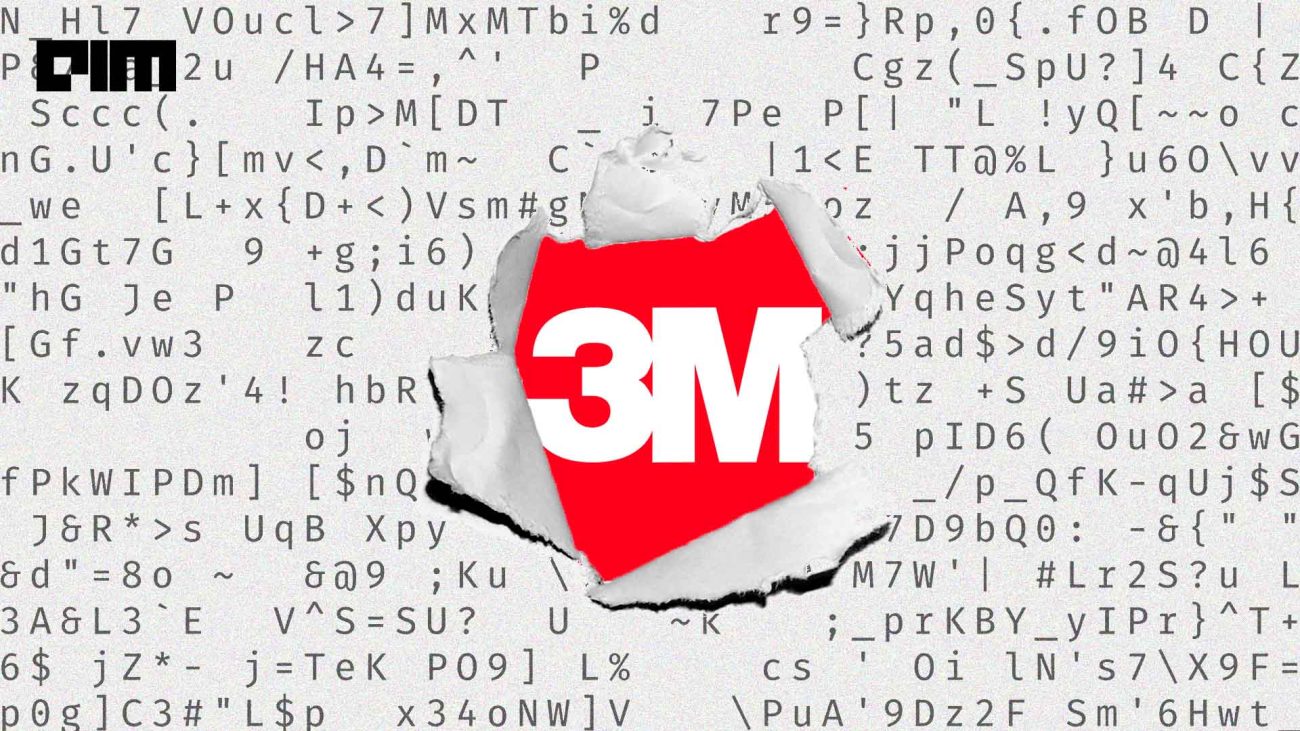|
Listen to this story
|
Founded in 1902 as the Minnesota Mining and Manufacturing Company, 3M is known for its innovation and the ability to develop new and useful products that solve problems and make life easier. Headquartered in St. Paul, Minnesota, the company is known for its products that have over time transitioned from being proper to common nouns, such as Scotch Tape, N95 respirator masks, Post-it notes and Thinsulate insulation.
Over the past 120 years, 3M has grown into a global conglomerate with operations in a wide range of industries. In an exclusive conversation with Analytics India Magazine, Mani S Upadhyaya, vice president, Data & Analytics and Technology Center of Excellence, 3M, discusses the conglomerate’s digital journey and how they indulge with modern-day technologies such as AI/ML and data analytics.
Upadhyaya has worked for over 20 years in 3M and is based in Minnesota, 3M’s corporate HQ. He works on digital transformation in the Technology Transformation Services group.
1. You have been with 3M for over 20 years. Tell us about the company’s digitisation journey.
Upadhyaya: 3M has identified four outcomes in the digital space.
- Digital products: These would be products with smarts – a convergence of material science with digital science, eg, smart air filters in our Filtrete line; connected safety – to improve the safety of all industrial workers by making our PPE line “smart” through the use of digital technology; digital Post-it notes – where Post-it® app for Microsoft Teams allows users to generate and organise ideas with the power of a digital whiteboard tool.
- Digital customer: Improving end-to-end customer experience by leveraging digital technologies. This would include improving search capabilities, and easy access to real-time pricing, inventory, order status, delivery and payment information.
- Digital operations: Leveraging digital technologies to reduce waste and improve yield in the manufacturing and supply chain areas. An example would be leveraging Internet of Things (IoT) technologies to improve yields of N-95 respirators during the pandemic.
- Digital enterprise: Deploying digital technologies to improve the productivity and employee experience within the enterprise, eg, deploying productivity apps on mobile devices, single access to all the enterprise apps, automation of repetitive tasks, etc.
2. How does 3M use data analytics?
Upadhyaya: We use data analytics for the daily management of our business. It helps us gain insights into customer needs, trends, and preferences and helps us shape and optimise our product development, marketing, and sales strategies.
Having near real-time, end-to-end, granular visibility of data reduces the lag between what’s happening on the front time and taking corrective actions. This, coupled with data democratisation, increases the velocity of analysis, thus improving the speed of decision-making. This capability also helps us build digital twins and simulate various business scenarios.
3. How 3M uses AI/ML?
Upadhyaya: 3M has embraced artificial intelligence (AI) and machine learning (ML) in various areas of its business. For example, 3M uses AI to detect customer disputes pre-emptively, thus reducing DSO. AI is also used for predictive maintenance, quality control, and supply chain optimisation. Another use case is helping improve marketing by customising the messages to customers more accurately. There are multiple other areas where we use AI – but those are primarily in product development.
We use machine learning in research and development, finance, sales, marketing, sourcing, supply chain and manufacturing, you name it. Some use cases are detecting anomalies in manufacturing processes and negotiating pricing with suppliers. It helps analyse historical data on prices, demand, and other relevant factors to identify patterns and trends that aid negotiations.
It is also being used to cross-sell and upsell in the marketing space. Machine learning helps analyse customer data, such as purchase history, browsing history, and demographic information, to identify patterns and trends that can assist in cross-selling efforts. Similarly, machine learning is also being used to upsell products.
Furthermore, machine learning is used to improve the accuracy of demand and sales forecasting and speed up experimentation in the research and development space. Analysing past research data helps 3M identify patterns and trends to improve its future R&D efforts. Using machine learning algorithms to analyse data on materials and their properties also helps the development of new materials and products.





















